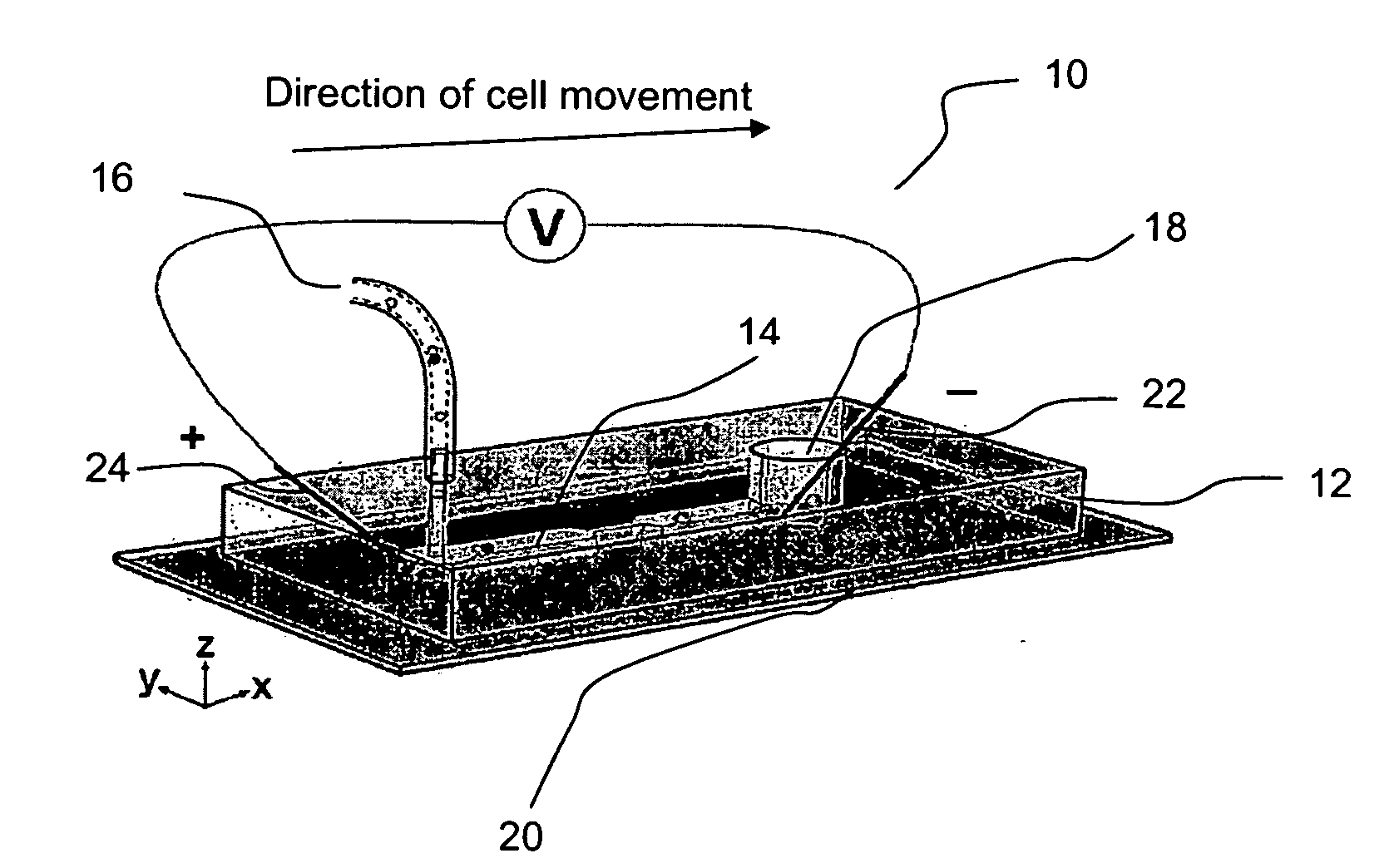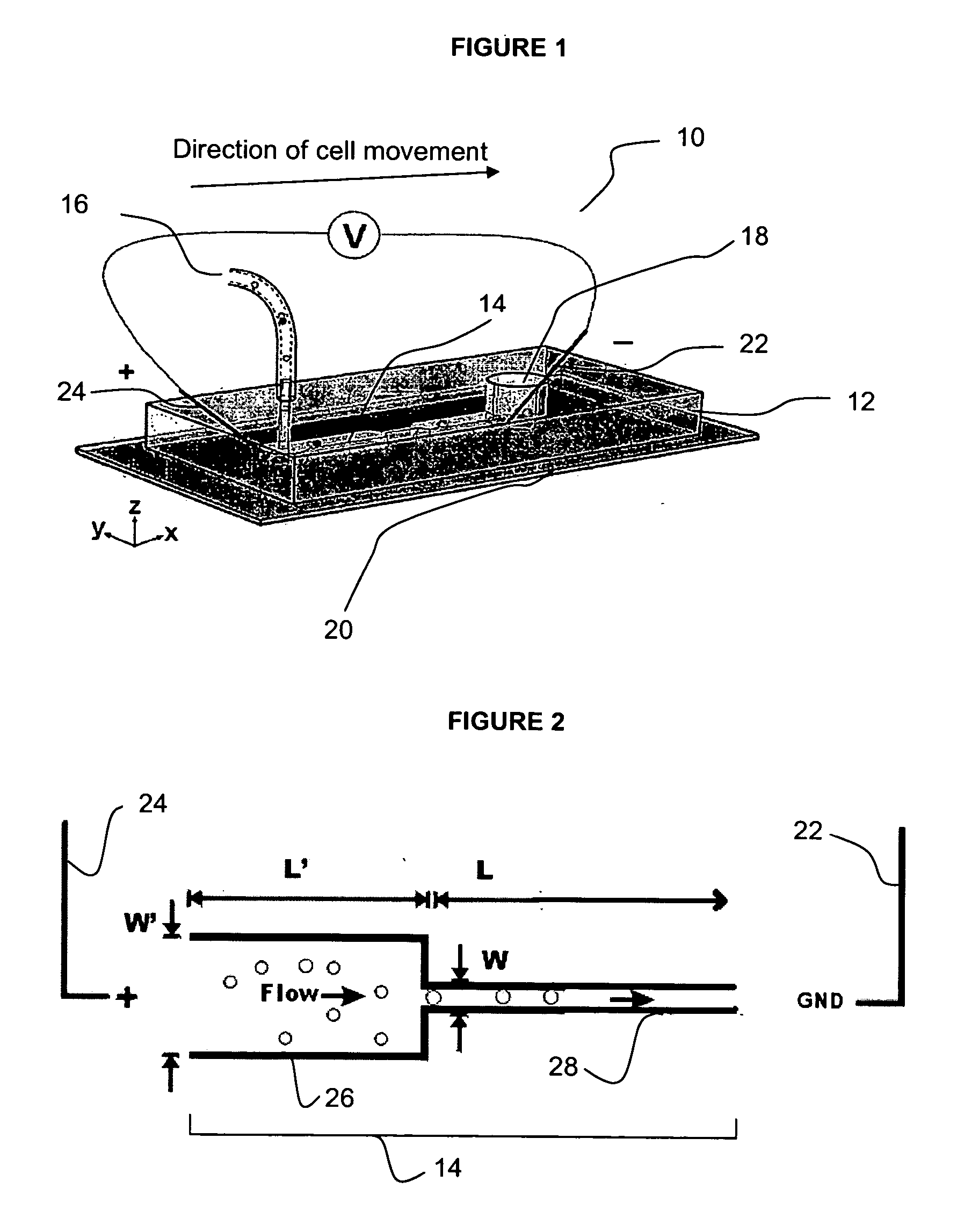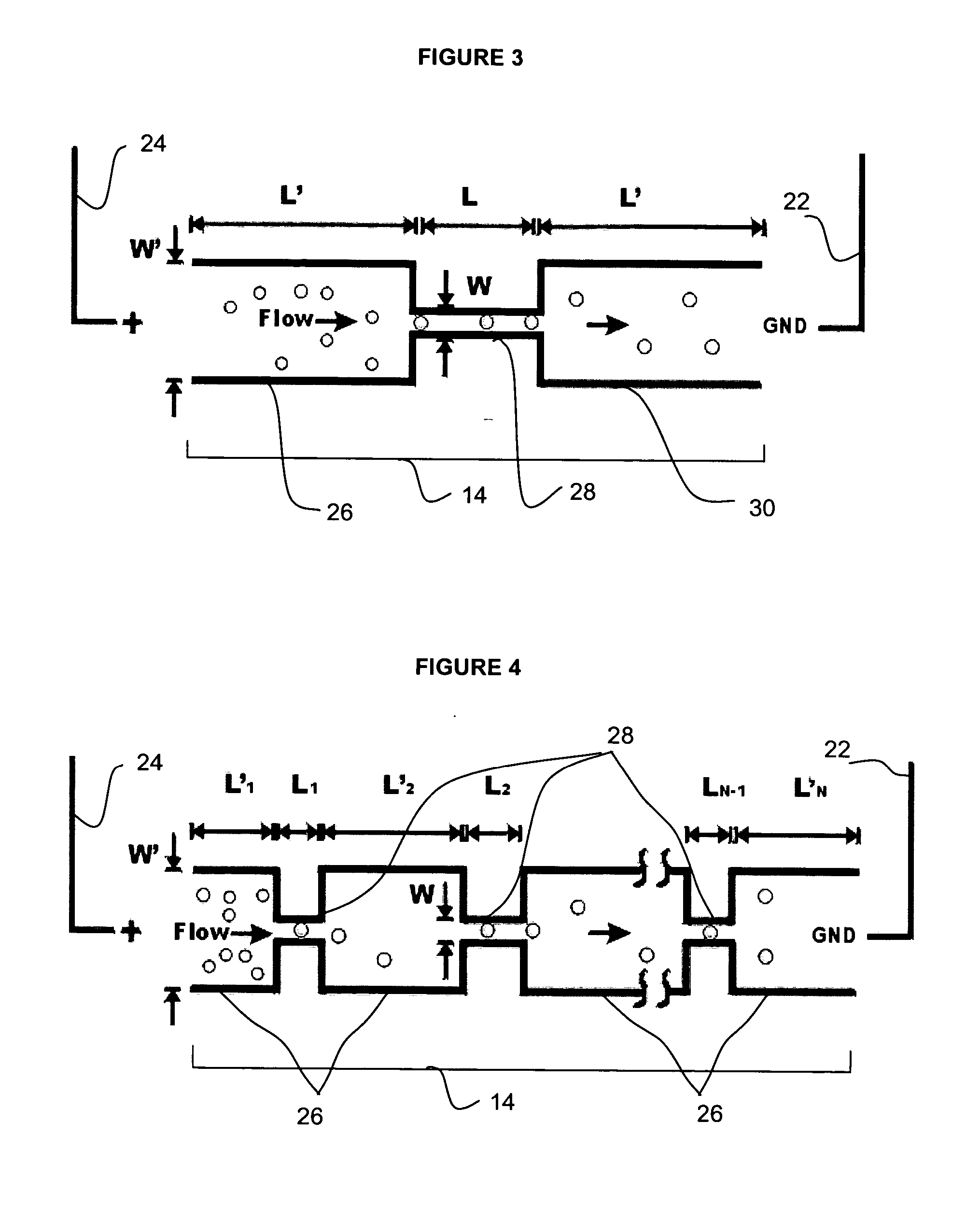Fluidic device
a technology of fluidic devices and ion channels, which is applied in the direction of specific use bioreactors/fermenters, enzymology, and after-treatment of biomass, etc., can solve the problems of denatured proteins, interference with subsequent biological assays, and cell lysis and release of intracellular materials
- Summary
- Abstract
- Description
- Claims
- Application Information
AI Technical Summary
Benefits of technology
Problems solved by technology
Method used
Image
Examples
examples
[0078] The invention will be further described by reference to the following detailed examples. These examples are provided for purposes of illustration only, and are not intended to limit the claimed invention.
Fluidic Device Fabrication
[0079] Fluidic devices (microchips) were fabricated based on PDMS using standard soft lithography method (Duffy et al., 1998). The microscale patterns were first created using computer-aided design software (FreeHand MX, Macromedia, San Francisco, Calif.) and then printed out on high-resolution (5080 dpi) transparencies. The transparencies were used as photomasks in photolithography on a negative photoresist (SU-8 2025, MicroChem Corp., Newton, Mass.). There could be up to 5% error introduced to the width of the channel due to the quality of the photomask. The thickness of the photoresist and hence the depth of the channels was around 33 μm (measured by a Sloan Dektak3 ST profilometer). The pattern of channels in the photomask was replicated in SU...
PUM
| Property | Measurement | Unit |
|---|---|---|
| temperature | aaaaa | aaaaa |
| width | aaaaa | aaaaa |
| width | aaaaa | aaaaa |
Abstract
Description
Claims
Application Information
 Login to View More
Login to View More - R&D
- Intellectual Property
- Life Sciences
- Materials
- Tech Scout
- Unparalleled Data Quality
- Higher Quality Content
- 60% Fewer Hallucinations
Browse by: Latest US Patents, China's latest patents, Technical Efficacy Thesaurus, Application Domain, Technology Topic, Popular Technical Reports.
© 2025 PatSnap. All rights reserved.Legal|Privacy policy|Modern Slavery Act Transparency Statement|Sitemap|About US| Contact US: help@patsnap.com



